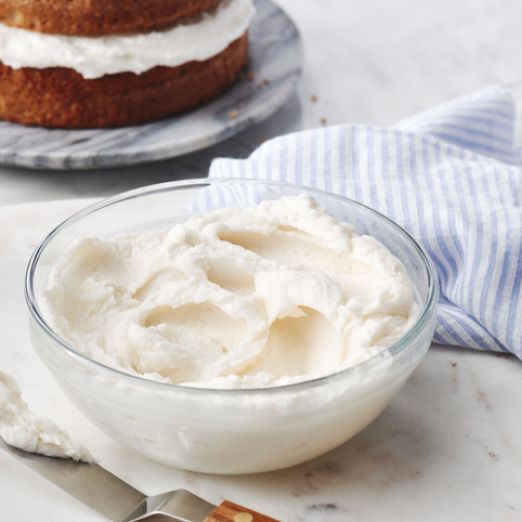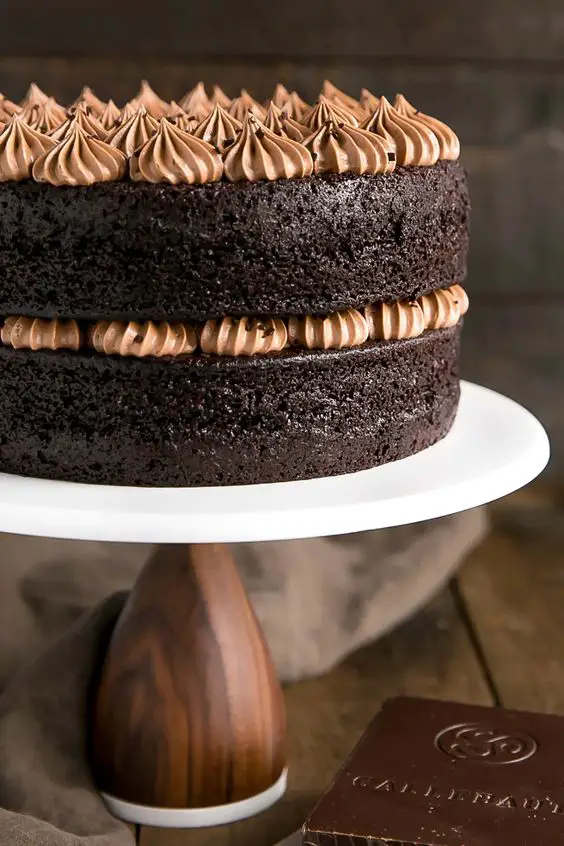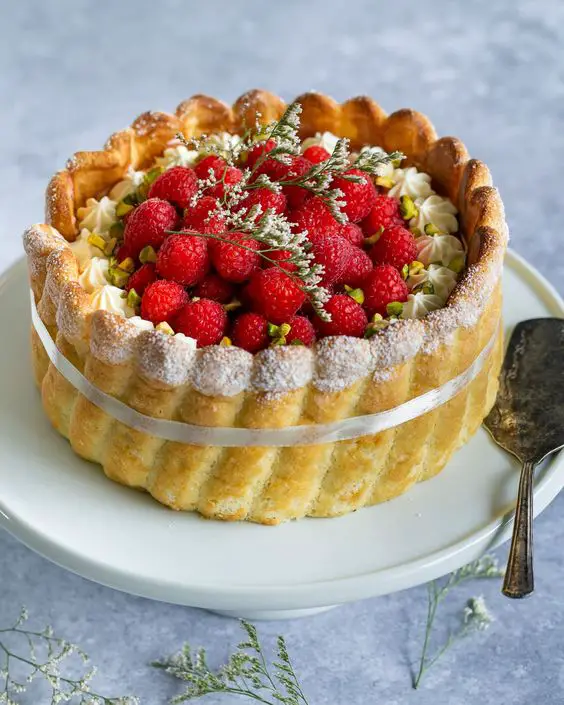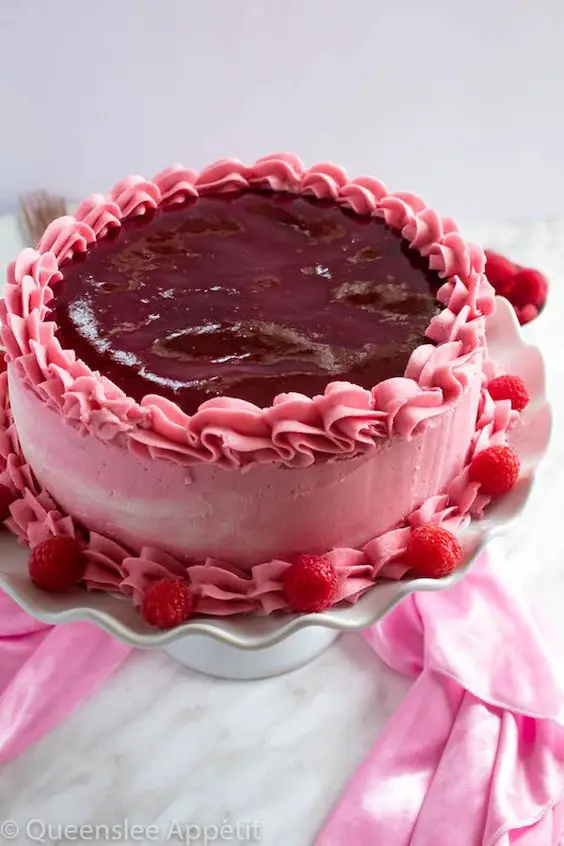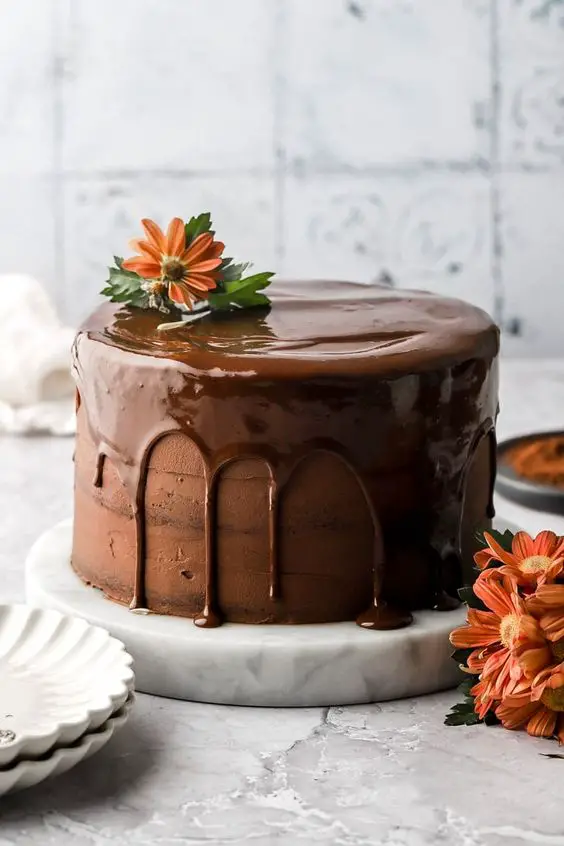Introducing Whipped Cream: A Delightful Culinary Wonder
Whipped Cream, a delightful culinary wonder, is a luscious and light concoction that has been tantalizing taste buds for centuries. This heavenly treat is made by whipping air into heavy cream until it transforms into a fluffy and airy texture, creating a delectable topping with a heavenly mouthfeel. Renowned for its versatility, whipped cream has earned its place as a cherished accompaniment to a wide array of desserts, fruits, hot beverages, and even savory dishes. Whether adorning a slice of pie, garnishing a steaming cup of hot chocolate, or enhancing the appeal of a summer fruit salad, this velvety delight never fails to add a touch of indulgence to any culinary creation. Join us on a delectable journey as we explore the captivating world of whipped cream and its timeless appeal in the realm of gastronomy.

What is Whipped Cream?
Whipped Cream is a culinary preparation made by beating heavy cream, or sometimes light cream, vigorously until it becomes light, airy, and fluffy. The process incorporates air into the cream, causing it to expand and form a smooth texture with a slight sweetness. This popular topping is widely used in both sweet and savory dishes, adding a touch of indulgence and enhancing the overall appeal of various culinary creations.
Typically, whipped cream is made by using a whisk, electric mixer, or other kitchen tools to whip the cream until it reaches the desired consistency. It can be served on its own as a topping for desserts like pies, cakes, ice creams, puddings, and fruits, or as an accompaniment to hot beverages like coffee, hot chocolate, and tea.
Whipped cream can also be flavored and customized by adding sugar, vanilla extract, cocoa powder, liqueurs, or other flavorings to suit different taste preferences. Additionally, it can be stabilized using ingredients like gelatin or cornstarch to maintain its texture and prevent deflation over time.
Due to its airy and creamy nature, whipped cream has become a beloved treat enjoyed by people all around the world. Its versatility and ability to complement a wide variety of dishes have made it a classic and cherished element of the culinary world.

Why you will love my Whipped Cream?
- Heavenly Texture: Whipped cream’s airy and fluffy texture is simply divine. Its smooth and light consistency melts in your mouth, creating a delightful experience with every bite.
- Versatility: This culinary wonder is incredibly versatile. Whether you’re topping a slice of pie, garnishing a bowl of fresh fruit, or adding a dollop to your favorite hot beverage, whipped cream effortlessly elevates the flavors of various dishes.
- Indulgent Sweetness: Whipped cream’s subtle sweetness enhances the taste of desserts without overwhelming them. It strikes a perfect balance, making it an ideal accompaniment to cakes, pastries, ice creams, and more.
- Easy to Customize: You can easily customize whipped cream to suit your taste preferences. By adding different flavors like vanilla, chocolate, or fruit extracts, you can create a wide array of delectable variations.
- Simple Preparation: Making whipped cream is a breeze. With just heavy cream and a whisk or electric mixer, you can whip up this delightful treat in a matter of minutes, adding a touch of luxury to your desserts.
- Crowd Pleaser: Whipped cream is a universally beloved topping. Its presence on any dessert table is sure to draw smiles and delight guests of all ages.
- Versatile Pairing: Whipped cream pairs exceptionally well with various flavors and ingredients. Whether it’s a warm piece of pie or a chilled bowl of fresh berries, whipped cream complements and enhances the overall taste experience.
- Festive Appeal: Its elegant appearance makes whipped cream an ideal garnish for special occasions and celebrations. It can instantly elevate the presentation of desserts, adding a touch of elegance to any table setting.
- Comforting and Nostalgic: Whipped cream invokes a sense of comfort and nostalgia for many, reminding them of cherished childhood memories and gatherings with loved ones.
- Decadent Without Being Heavy: Unlike some rich toppings, whipped cream is luxurious without feeling overly heavy or cloying, making it an enjoyable addition to a wide range of dishes.
In conclusion, whether you have a sweet tooth or simply appreciate the finer pleasures of the culinary world, Whipped Cream is a treat that brings joy and delight to anyone who experiences its light, fluffy, and delicious goodness.

Frequently Asked Questions about Whipped Cream:
1. How long can whipped cream be stored? Whipped cream is best enjoyed fresh, as it tends to deflate and lose its fluffy texture over time. If you have leftovers, store them in an airtight container in the refrigerator for up to 24 hours. However, keep in mind that the quality may deteriorate after a few hours, and it may separate or become watery.
2. Can I use light cream instead of heavy cream? While it is possible to whip light cream, it will not hold its shape as well as heavy cream due to its lower fat content. Heavy cream, with its higher fat content, is recommended for the best results when making whipped cream.
3. My whipped cream is too runny. What should I do? If your whipped cream is too runny, it may not have been whipped enough. You can try re-whipping the cream at a higher speed until it reaches the desired consistency. Be cautious not to overwhip, as it can turn into butter. If it’s still not thickening, consider chilling both the cream and the mixing bowl to help the process.
4. My whipped cream is overwhipped and has become grainy. Can I fix it? If you accidentally overwhip the cream, it can turn grainy and lose its smooth texture. Unfortunately, there is no easy fix for overwhipped cream. However, you can salvage it by adding a bit of fresh cream to the overwhipped batch and gently folding it in to soften the texture.
5. Can I make whipped cream ahead of time for a party? While it’s best to enjoy whipped cream freshly made, you can prepare it a few hours in advance for a party. Store it in the refrigerator in an airtight container, and if it starts to deflate, gently rewhip it before serving.
6. Can I freeze whipped cream? Whipped cream doesn’t freeze well, as it tends to lose its texture and become grainy when thawed. It’s best to avoid freezing it.
7. Can I sweeten whipped cream with something other than sugar? Yes, you can sweeten whipped cream with alternative sweeteners like honey, maple syrup, or agave syrup. Keep in mind that different sweeteners may alter the flavor and consistency of the whipped cream.
8. Can I use a non-dairy alternative to heavy cream for whipped cream? Yes, you can use non-dairy alternatives like coconut cream or soy creamer to make whipped cream. However, not all non-dairy alternatives will whip as well as heavy cream, so it might require experimentation to find the best one.
9. Why is my whipped cream separating? Whipped cream can separate if it’s overwhipped or if it’s been sitting for too long. Also, using cream with a lower fat content can increase the risk of separation. To prevent separation, whip the cream until it forms soft peaks and use it immediately or refrigerate promptly.
10. Can I rewhip leftover whipped cream that has deflated? Yes, you can rewhip leftover whipped cream that has deflated to restore its texture. However, it’s best to do this just before serving, as rewhipped cream might not hold its shape as well as freshly whipped cream.
Remember, practice makes perfect when it comes to making whipped cream, and a little experimentation can help you achieve the perfect consistency and flavor for your desserts!

How to serve Whipped Cream
Serving whipped cream is a delightful and straightforward process. Here are various ways to serve whipped cream:
- As a Dessert Topping: Whipped cream is a classic topping for a wide range of desserts, such as pies, cakes, tarts, and sundaes. Simply dollop a generous amount of whipped cream on top of the dessert just before serving. It adds a touch of luxury and enhances the overall flavor experience.
- With Fresh Fruits: Whipped cream pairs exceptionally well with fresh fruits, such as strawberries, blueberries, peaches, and more. Serve it alongside a fruit salad or as a topping for individual fruit servings.
- On Hot Beverages: Whipped cream is a popular accompaniment for hot beverages like hot chocolate, coffee, and chai tea. Add a dollop of whipped cream to the surface of the drink, and you can even sprinkle cocoa powder or cinnamon on top for an extra treat.
- With Ice Cream: Elevate the indulgence of your ice cream by topping it with whipped cream. Whether it’s a scoop of vanilla, chocolate, or any other flavor, whipped cream adds a creamy and airy contrast to the frozen treat.
- As a Filling: Whipped cream can also be used as a filling for cakes, pastries, and cream puffs. Pipe or spread whipped cream between cake layers or inside cream puffs to create a light and delectable filling.
- With Waffles or Pancakes: Enjoy whipped cream as a topping for freshly-made waffles or pancakes, along with your favorite syrup or fruit compote. It’s a delightful twist on traditional breakfast items.
- In Parfaits or Trifles: Whipped cream can be a delightful layer in parfaits or trifles. Alternate layers of whipped cream with fruits, cake or cookie crumbles, and other dessert components for a visually appealing and delicious dessert.
- As a Garnish for Soups: In some cuisines, a dollop of lightly sweetened whipped cream is used as a garnish for cold soups like gazpacho. It adds a refreshing touch and balances the flavors of the savory soup.
- In Milkshakes: Blend whipped cream into milkshakes for an extra creamy and frothy texture. It’s a delicious addition to flavors like chocolate, strawberry, or vanilla.
- With Puddings and Custards: Serve whipped cream alongside puddings and custards to add a luxurious touch and enhance the velvety texture of the desserts.
Remember to serve whipped cream chilled for the best taste and texture. It’s a versatile and beloved addition to countless dishes, adding a touch of elegance and delight to any meal or treat.
How to store Whipped Cream
Properly storing whipped cream is essential to maintain its freshness and texture. Here’s how to store whipped cream:
- Refrigeration: Whipped cream should be stored in the refrigerator at all times, even if you plan to serve it immediately. The cold temperature helps preserve its fluffy consistency and prevents it from spoiling quickly.
- Airtight Container: Transfer the whipped cream into an airtight container for storage. This helps prevent the absorption of any odors from the refrigerator and maintains the cream’s flavor.
- Avoid Freezing: Whipped cream does not freeze well. Freezing can cause it to separate and lose its airy texture, resulting in a grainy and undesirable consistency. Avoid freezing whipped cream if possible.
- Use Fresh Cream: Whipped cream is best enjoyed fresh, so try to make only as much as you need for immediate use. While it can be stored for a short period, its quality will gradually diminish over time.
- Refrigerate Promptly: If you have leftover whipped cream after serving, refrigerate it promptly. Avoid leaving it at room temperature for an extended period, as it can quickly spoil and become unsafe to eat.
- Short-Term Storage: Whipped cream can be stored in the refrigerator for up to 24 hours. However, its texture may start to deflate after a few hours, so it’s best to enjoy it as soon as possible.
- Re-Whipping: If the whipped cream has deflated or lost some of its fluffiness during storage, you can re-whip it briefly with an electric mixer or whisk to restore its texture before serving.
- Discard Spoiled Cream: If you notice any signs of spoilage, such as an off odor, unusual texture, or sour taste, discard the whipped cream immediately. It’s essential to prioritize food safety and not consume spoiled dairy products.
By following these storage guidelines, you can enjoy your whipped cream to the fullest, maintaining its creamy, airy texture and delicious taste. Always remember to refrigerate it promptly and consume it within a reasonable time frame to savor the best quality whipped cream.

Sure! Here are the details of the ingredients and quantities typically used to make whipped cream:
Whipping Cream Recipe
Ingredients:
- Heavy Cream (also known as Heavy Whipping Cream): This is the primary ingredient used to make whipped cream. It should have a high fat content (usually around 36-40%) to achieve the desired texture.
- Sugar: This is an optional ingredient that adds sweetness to the whipped cream. The amount of sugar used can vary based on personal preference and the sweetness of the dessert being served. Powdered sugar is often preferred as it dissolves more easily.
- Vanilla Extract: Also optional, but vanilla extract adds a pleasant flavor to the whipped cream. It complements a wide range of desserts and can be used to enhance the overall taste.
Quantities:
- 1 cup (240 ml) of Heavy Cream: This quantity can be adjusted depending on how much whipped cream you want to make.
- 2-4 tablespoons of Sugar: The amount of sugar can be adjusted based on how sweet you want the whipped cream to be. Start with 2 tablespoons and increase if desired.
- 1 teaspoon of Vanilla Extract (optional): Adding a small amount of vanilla extract can enhance the flavor of the whipped cream. Adjust the quantity to suit your taste.
Note: The above quantities are approximate and can be adjusted based on personal preference and the specific dessert you are serving. For a larger batch of whipped cream, simply scale up the ingredients accordingly.
Equipment:
- Electric Mixer or Whisk: You will need either an electric mixer (handheld or stand mixer) or a whisk to whip the cream. An electric mixer will make the process faster and easier, but a whisk can be used if you prefer a more hands-on approach.
Instructions:
- Chill the bowl and beaters (or whisk) in the refrigerator for at least 15-20 minutes before starting. Cold equipment helps the cream whip faster and hold its shape better.
- Pour the heavy cream into the chilled bowl and start whipping it at low speed (or whisking by hand).
- Gradually increase the speed (or whisking intensity) to medium-high or high. As the cream thickens, add the sugar and vanilla extract (if using) slowly while continuing to whip.
- Whip the cream until it reaches the desired consistency. It should form soft peaks that hold their shape but are still creamy and not too stiff.
- Be careful not to overwhip the cream, as it can turn into butter and lose its fluffy texture.
- Once whipped, use the cream immediately as a topping or refrigerate it in an airtight container for later use. Whipped cream is best consumed on the same day it’s made for the freshest taste and texture.
Enjoy your homemade whipped cream as a delectable topping for your favorite desserts, fruits, or hot beverages!
Nutrition information:
The nutritional information for whipped cream can vary based on the specific recipe and ingredients used. Below is a general overview of the approximate nutritional values for a standard serving size of whipped cream (2 tablespoons or 30 grams):
- Calories: Approximately 50-60 calories
- Total Fat: Approximately 5-6 grams
- Saturated Fat: Approximately 3-4 grams
- Cholesterol: Approximately 15-20 milligrams
- Sodium: Approximately 5-10 milligrams
- Total Carbohydrates: Approximately 1-2 grams
- Sugar: Approximately 1-2 grams
- Protein: Approximately 0.5 grams
It’s important to note that the nutritional values provided are approximate and can vary depending on the type of cream used (heavy cream vs. light cream) and any additional ingredients like sugar or flavorings.
Whipped cream is relatively high in calories and saturated fat due to its cream content. It’s a delicious treat to be enjoyed in moderation as part of a balanced diet.
If you have specific dietary requirements or concerns, it’s always best to check the nutritional information on the product label or use a trusted recipe calculator to calculate the exact nutritional values based on the specific ingredients you use to make whipped cream.
Happy baking!

